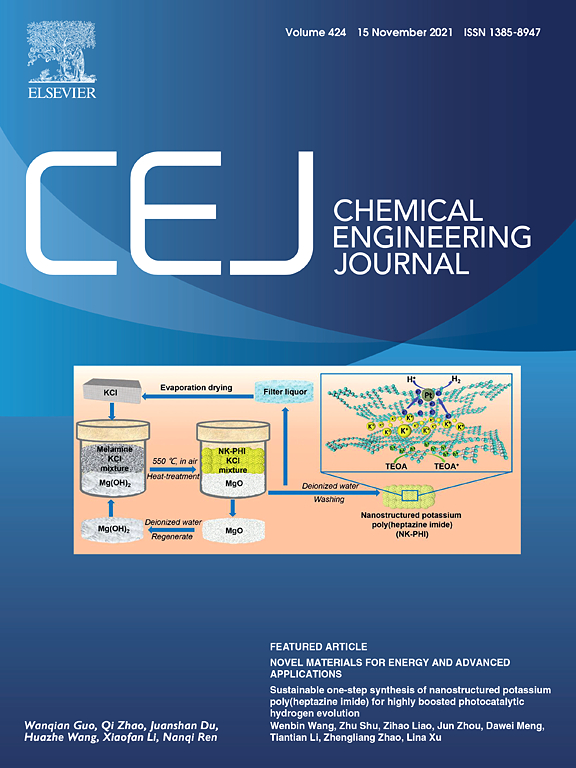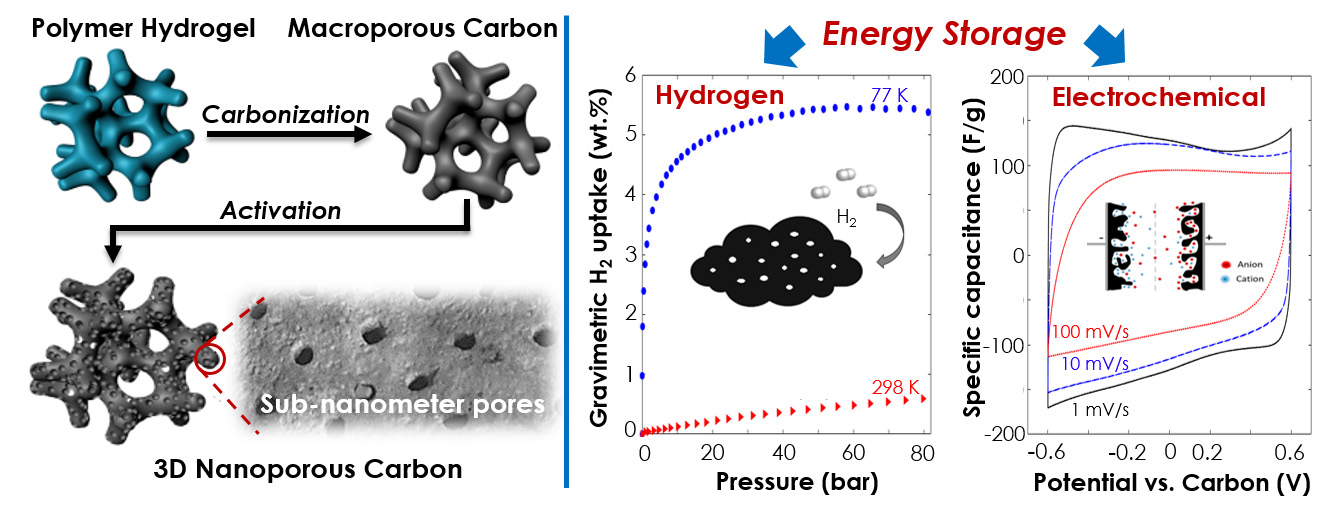Due to the low density and boiling point of hydrogen, its efficient storage represents one of the biggest challenges on the transition towards a carbon-free energy supply. Within a cooperation with the Institute of Physics, the National Center for Scientific Research Demoktritos in Athens, the University of Cyprus, Nicosia, and the Stanford University, a team around Nikolaus Kostoglou from the Chair of Functional Materials and Materials Systems recently introduced a novel nanoporous carbon with extremely high surface area (2200 m2/g) and a low average pore size of 0.5 nm. Within these small pores, hydrogen molecules can be adsorbed at low pressures and fully reversibly desorbed during pressure release. With this nanoporous carbon, the gravimetric hydrogen storage capacity target of 5.5 wt.% for on-board automotive hydrogen storage systems, as defined by the U.S. Department of Energy, could be reached for the first time. These pioneering findings have been recently published in the Chemical Engineering Journal.
N. Kostoglou, C. Kozcwara, S. Stock, C. Tampaxis, G. Charalambopoulou, T. Steriotis, O. Paris, C. Rebholz, C. Mitterer, Nanoporous polymer-derived activated carbon for hydrogen adsorption and electrochemical energy storage, Chemical Engineering Journal 427 (2022) 131730.


